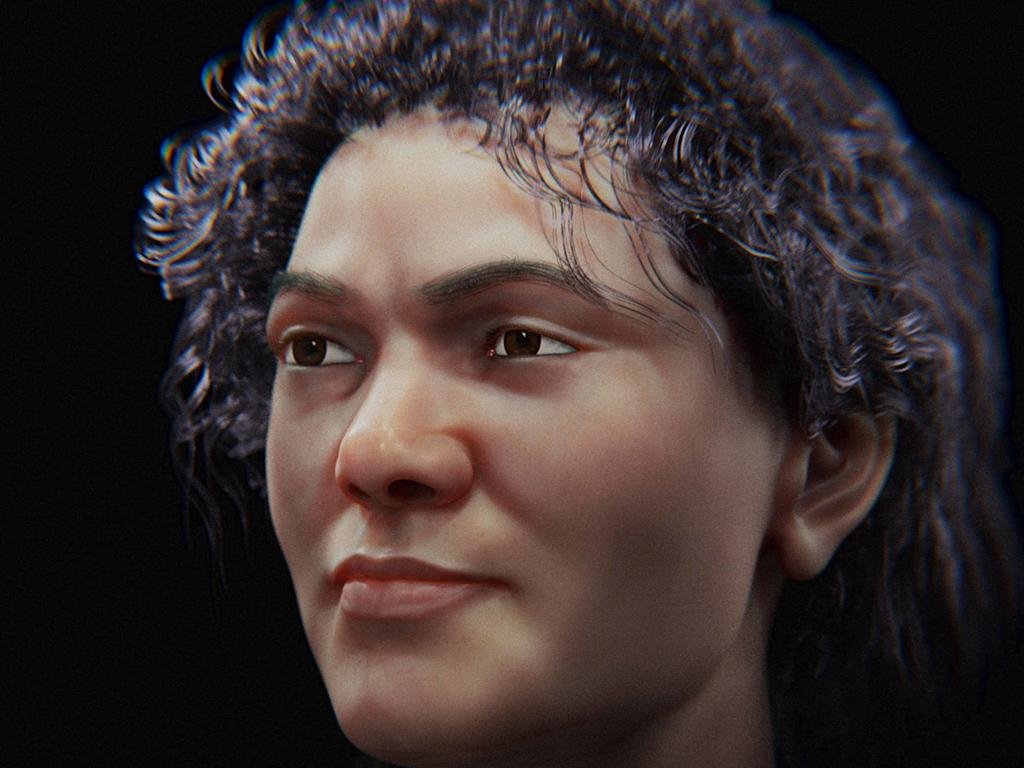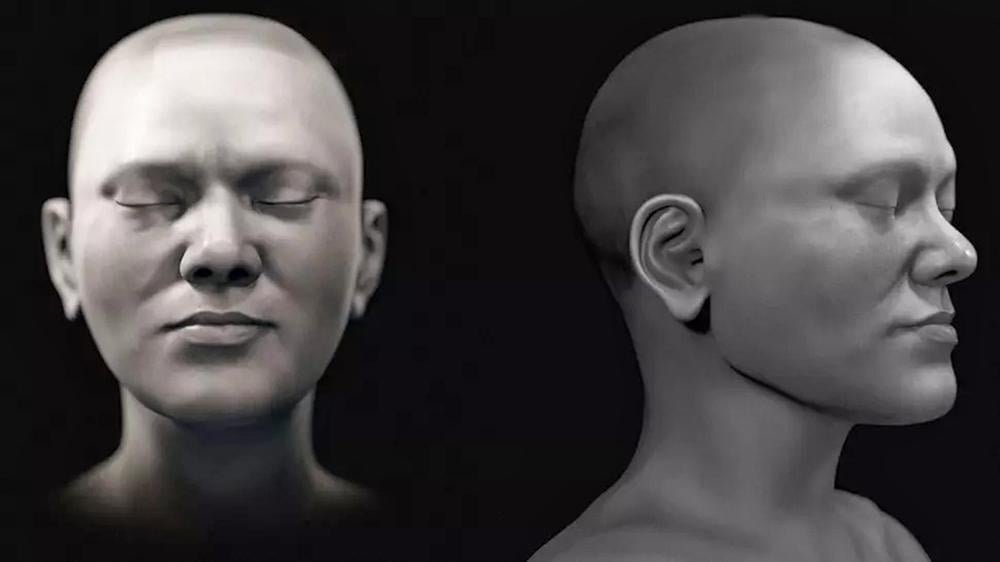Live Science reports that an international team of researchers has unveiled a lifelike facial reconstruction of the Zlatý kůň woman, a 45,000-year-old individual whose remains were discovered in a cave system in the Czech Republic in 1950.
 A facial approximation of the Zlatý kůň woman. Credit: Cícero Moraes)
A facial approximation of the Zlatý kůň woman. Credit: Cícero Moraes)
The Zlatý kůň woman, whose moniker translates to “golden horse” in Czech, earned her name from the location of her discovery, near a hill above the cave system.
Originally believed to be two separate individuals due to a split skull, later genetic analysis proved that she was a single woman who lived 45,000 years ago.
This astonishing revelation positioned her as a remarkable figure among early modern humans who potentially interbred with Neanderthals. Approximately 3% of her genome bore Neanderthal ancestry, marking a connection to these ancient relatives.
 A facial approximation of the Zlatý kůň woman. Credit: Cícero Moraes)
A facial approximation of the Zlatý kůň woman. Credit: Cícero Moraes) B&W version of the facial approximation. Credit: Cícero Moraes
B&W version of the facial approximation. Credit: Cícero Moraes
Despite the extensive genetic insights into the Zlatý kůň woman, details about her physical appearance had remained largely elusive.
Now, using facial approximation techniques, researchers meticulously reconstructed her facial features based on existing computed tomography (CT) scans of her skull, even though portions were missing due to damage caused by animals after her death.
The collaborative effort involved Brazilian graphics expert Cícero Moraes and researchers from various countries. Moraes and his team embarked on the challenging task of digitally recreating the missing portions of her skull. Drawing from statistical data compiled in 2018 and utilizing CT scans of both modern men and women, they produced a digital representation that provided intriguing insights into her facial structure.
“An interesting piece of information about the skull is that it was gnawed by an animal after her death,” Moraes told Live Science. “This animal could have been a wolf or a hyena ([both were] present in the fauna at that time).”
Notably, her robust jawline caught their attention, pointing towards a possible affinity with Neanderthals in terms of facial morphology. Moraes emphasized, “What most caught our attention was the robustness of the structure [of the face], especially the mandible [lower jaw]… We see that the jaw structure of Zlatý kůň tends to be more compatible with Neanderthals.”
Furthermore, the Zlatý kůň woman’s cranial features set her apart from other contemporary humans. Her endocranial volume, the space within the skull that houses the brain, exceeded that of modern individuals. Moraes attributed this divergence to a potential stronger structural similarity between her and Neanderthals.
 The woman’s nine-piece skull is under the care of the Department of Anthropology of the National Museum in Prague. Credit: Cícero Moraes
The woman’s nine-piece skull is under the care of the Department of Anthropology of the National Museum in Prague. Credit: Cícero Moraes
The reconstructed image presents a woman with striking features, characterized by dark curly hair, brown eyes, and a robust facial structure. The meticulous process of reconstruction aimed to create both speculative and scientific versions, with and without coloring, to provide a more comprehensive representation for the general public.
Cosimo Posth, an archaeologist from the University of Tübingen, emphasized the significance of morphological data in reconstructing appearances, stating, “In my opinion, morphological data can provide a reasonable idea of what the shape of her head and face might have been but not an accurate representation of her soft tissues.” He acknowledged the challenges in achieving an entirely precise representation.
More information: Moraes, C. et al. (2023). A Aproximação Facial Digital 3D de Zlatý kůň 1 (45.000 AP).





